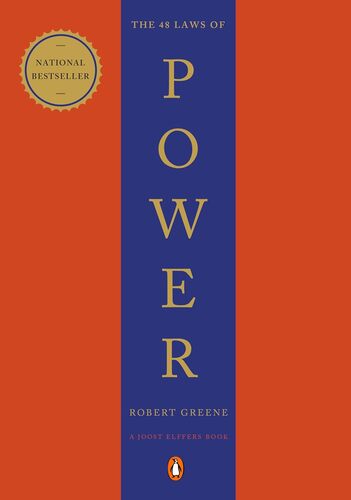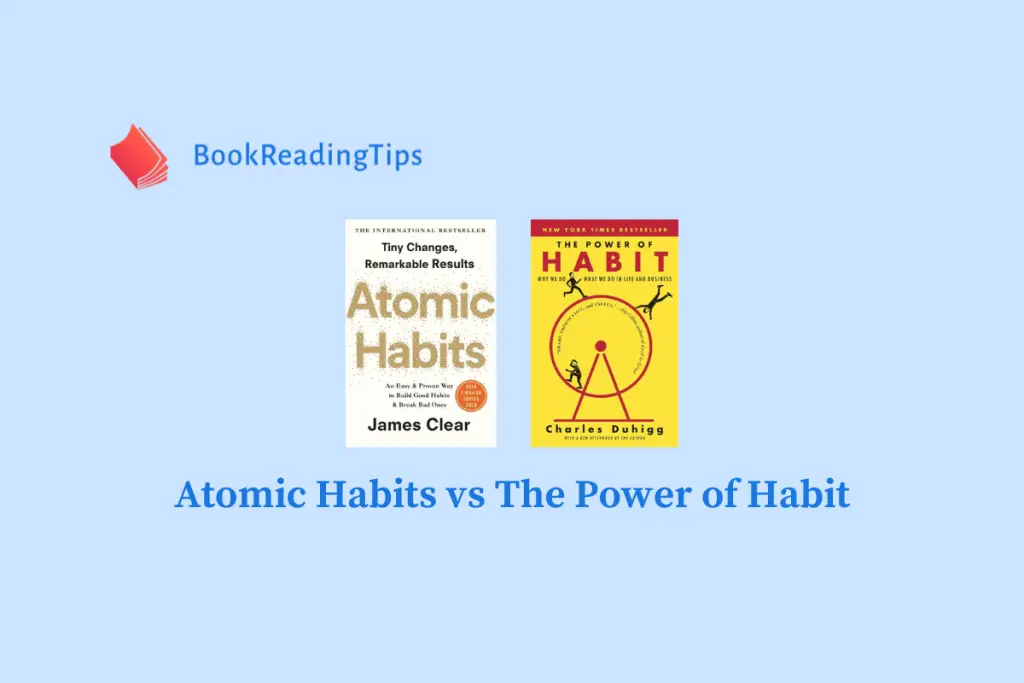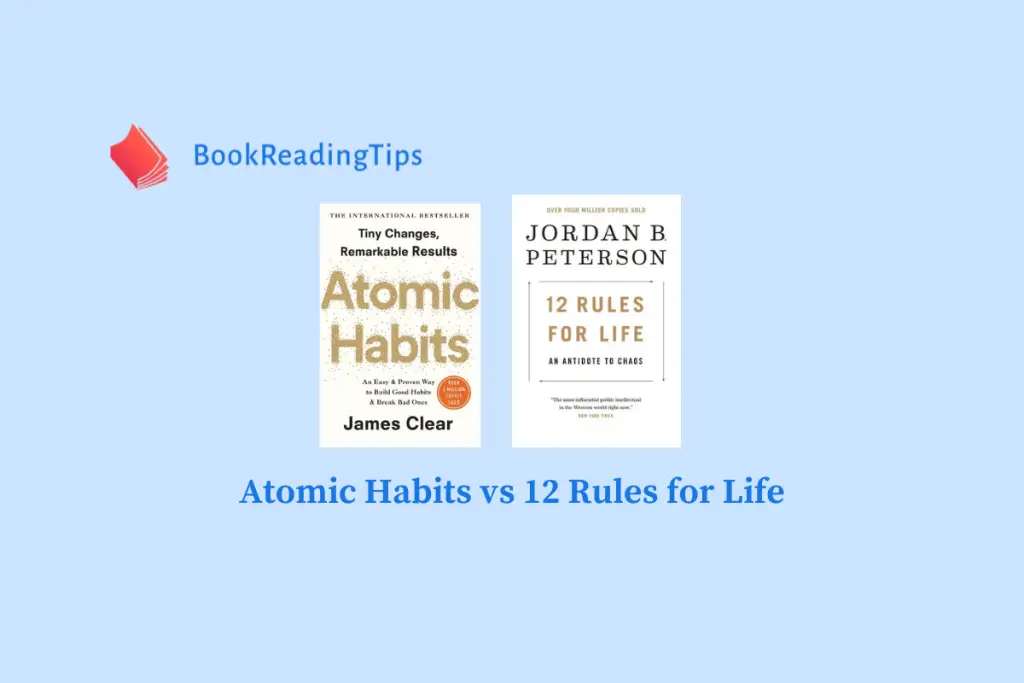Atomic Habits by James Clear and The 48 Laws of Power by Robert Greene are two influential books that have significantly impacted the lives of many readers globally. Atomic Habits is an insightful guide that enlightens readers on how small, consistent habits can lead to remarkable results. It’s a book that emphasizes the power of compound growth and how it can significantly influence personal and professional development. On the other hand, The 48 Laws of Power is a compelling narrative on manipulation, power, and control. It’s a manual that lays down 48 laws to gain, maintain, and defend power in all aspects of life.
In terms of differences, Atomic Habits and The 48 Laws of Power cater to different sets of readers with varying interests. If you’re someone looking to improve your life through incremental changes and develop a system for consistent growth, Atomic Habits is the book for you. However, if you’re interested in understanding the dynamics of power, control, and manipulation in social and professional settings, The 48 Laws of Power would be a more fitting read. While Atomic Habits is more about personal development, The 48 Laws of Power leans more towards strategic thinking and social dynamics.
In my opinion, both books offer valuable insights, albeit in different areas. In the following sections of this article, I will delve deeper into the key teachings of both Atomic Habits and The 48 Laws of Power. We will discuss each book separately, explore their unique concepts, and how these ideas can be applied in real-life scenarios. Regardless of your current life situation or your goals, I believe that both books hold powerful lessons that can help shape your thinking and actions for the better. So, let’s dive in and explore these fascinating books in more detail.
Table of Contents
- Delving Into the Atomic Habits
- Exploring the 48 Laws of Power
- Similarities & Differences Between Both Books
- FAQs
- 1. What is the main focus of Atomic Habits and the 48 Laws of Power?
- 2. How are the writing styles of Atomic Habits and the 48 Laws of Power different?
- 3. Can Atomic Habits and the 48 Laws of Power be used together?
- 4. Which book is better for personal development, Atomic Habits or the 48 Laws of Power?
- 5. Are Atomic Habits and the 48 Laws of Power based on scientific research?
- 6. Which book, Atomic Habits or the 48 Laws of Power, is easier to read and understand?
- Conclusion
Delving Into the Atomic Habits

i. Unveiling Tiny Changes for Remarkable Results
In my opinion, one of the most intriguing aspects of “Atomic Habits” is its emphasis on the power of small, incremental changes. The author, James Clear, suggests that we often overlook the significance of small adjustments in our daily routines, not realizing that they can lead to profound transformation over time. For instance, improving just 1% every day can result in a 37 times improvement over a year.
ii. The Four Laws of Behavior Change
The core of “Atomic Habits” revolves around the Four Laws of Behavior Change. These are: make it obvious, make it attractive, make it easy, and make it satisfying. Clear believes that these four principles can guide anyone to break bad habits and cultivate good ones. For example, if you want to read more, you should make it obvious by placing a book on your bedside table, make it attractive by choosing a book you’re interested in, make it easy by starting with just 15 minutes per day, and make it satisfying by allowing yourself a treat afterward.
iii. Identity-Based Habits
Another principle that resonated with me in “Atomic Habits” is the concept of identity-based habits. Clear argues that lasting change is more likely when we focus on who we wish to become, rather than what goals we want to achieve. In other words, it’s more effective to identify as a reader, than to set a goal to read 50 books a year.
Exploring the 48 Laws of Power

i. Power & Manipulation
“48 Laws of Power”, penned by Robert Greene, is a book that, in my opinion, provides a rather cynical view of human nature and power dynamics. It offers a set of rules that supposedly guide individuals to attain and maintain power. The laws range from the manipulative, such as ‘Law 3: Conceal Your Intentions’, to the strategic, like ‘Law 15: Crush Your Enemy Totally’.
ii. Historical & Cultural References
One of the captivating aspects of “48 Laws of Power” is its use of historical and cultural references to illustrate the laws. Greene provides numerous anecdotes from history, politics, and literature to demonstrate how these laws have been applied, and the consequences of ignoring them. While some might find these examples endorsing unethical behavior, I think they serve to caution readers about the potential abuses of power.
iii. Power as a Game
A recurring theme in “48 Laws of Power” is the idea of power as a game, where the objective is to outmaneuver your opponents to gain the upper hand. Greene suggests that understanding and mastering the laws can give you an edge in this game. However, it’s important to note that these laws aren’t meant to be used indiscriminately. They require careful application and should be employed with discretion and consideration for others.
Similarities & Differences Between Both Books
Similarities
In my view, James Clear’s Atomic Habits and Robert Greene’s 48 Laws of Power, although vastly different in their approach, share some fundamental similarities. Both books aim to guide the reader towards personal improvement and success.
Atomic Habits emphasizes the power of small, incremental changes in daily routines, while 48 Laws of Power offers a strategic guide to gaining and protecting power. However, both authors agree on the importance of discipline and consistency in achieving one’s goals. They both highlight the significance of understanding human psychology and using it to our advantage.
Moreover, both books encourage readers to be proactive and intentional in their actions. Clear and Greene suggest that passivity leads to stagnation, while active engagement with our habits or power dynamics can lead to growth and success.
Differences
Despite these similarities, there are also stark differences between Atomic Habits and 48 Laws of Power. The most apparent contrast lies in their respective focuses: Atomic Habits is about personal development and habit formation, while 48 Laws of Power is about understanding and manipulating power dynamics for personal gain.
In my opinion, the tone and style of both books are also markedly different. Atomic Habits is written in a friendly, approachable manner, making complex ideas accessible to the average reader. On the other hand, 48 Laws of Power has a more formal and authoritative tone, reflecting its focus on power and strategy.
The methods suggested by both authors also differ significantly. Clear advocates for gradual, incremental changes to form positive habits and improve oneself. He believes in the power of small, consistent actions leading to significant long-term results. Conversely, Greene’s approach is more aggressive and strategic, involving tactics like deception, manipulation, and strategic alliances.
In conclusion, while Atomic Habits and 48 Laws of Power share some fundamental principles about discipline, consistency, and understanding human psychology, they differ significantly in their focus, tone, and suggested methods. Both books offer valuable insights, but their applicability would depend on the individual reader’s goals and context.
FAQs
1. What is the main focus of Atomic Habits and the 48 Laws of Power?
Atomic Habits, written by James Clear, focuses on how small, daily habits can lead to significant changes in your life. On the other hand, The 48 Laws of Power by Robert Greene is a guide on manipulation and power dynamics, offering strategies to gain and maintain power.
2. How are the writing styles of Atomic Habits and the 48 Laws of Power different?
Atomic Habits is written in a straightforward, practical style with actionable advice and real-life examples. The 48 Laws of Power is more narrative and philosophical, filled with historical anecdotes and lessons.
3. Can Atomic Habits and the 48 Laws of Power be used together?
Yes, they can be used together. While Atomic Habits helps you create productive routines, the 48 Laws of Power can guide you in navigating power dynamics in personal and professional relationships.
4. Which book is better for personal development, Atomic Habits or the 48 Laws of Power?
It depends on your goals. If you are looking to improve your daily habits and productivity, Atomic Habits would be more beneficial. If you are interested in understanding power dynamics and improving your strategic thinking, the 48 Laws of Power would be more suitable.
5. Are Atomic Habits and the 48 Laws of Power based on scientific research?
Atomic Habits is based on scientific research about how habits work and how they can be changed. The 48 Laws of Power, while not scientific, draws from historical events and philosophical concepts to formulate its laws.
6. Which book, Atomic Habits or the 48 Laws of Power, is easier to read and understand?
Atomic Habits is generally considered easier to read and understand due to its practical style and clear language. The 48 Laws of Power, with its historical anecdotes and philosophical discussions, may require more concentration and interpretation.
Conclusion
Atomic Habits and 48 Laws of Power are both transformative books, yet they address different aspects of life. Atomic Habits, by James Clear, focuses on the power of tiny changes in our daily routines, emphasizing that small, consistent actions can lead to significant results over time. This book is ideal for anyone seeking to form new habits or break old ones.
On the other hand, 48 Laws of Power by Robert Greene is a guide to manipulation and power dynamics, offering a controversial yet insightful look into human behavior. It’s a perfect read for those interested in understanding power structures and improving their strategic thinking.
While both books offer strategies for personal development, their approaches vary significantly. Atomic Habits encourages positive changes through consistency and patience, while 48 Laws of Power explores the darker, Machiavellian side of human nature.
Despite their differences, both books provide valuable insights into human behavior, making them essential reads for anyone interested in personal growth, leadership, and understanding the complexities of human interactions. These two books complement each other well, providing a comprehensive guide to personal development and power dynamics.




